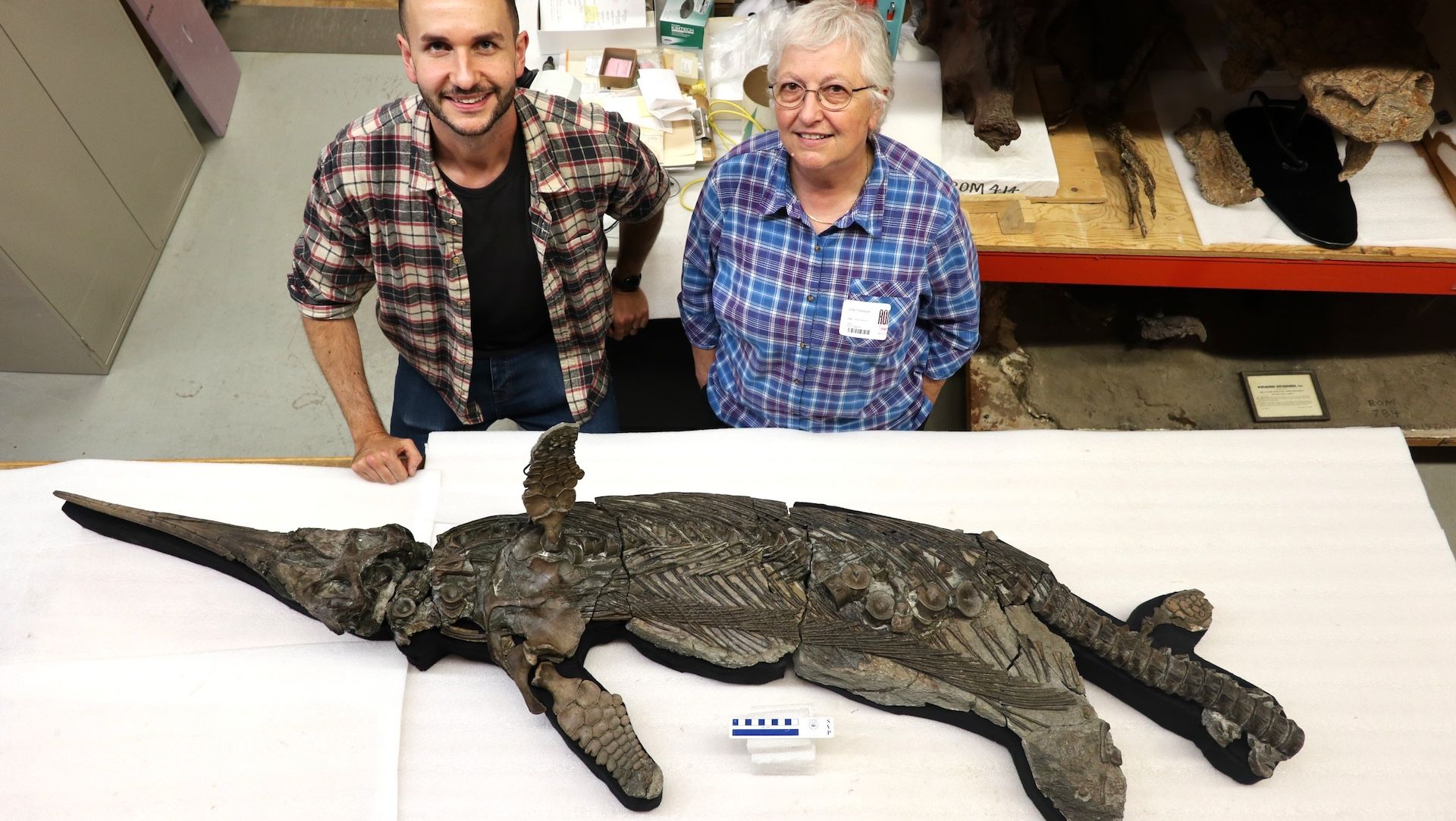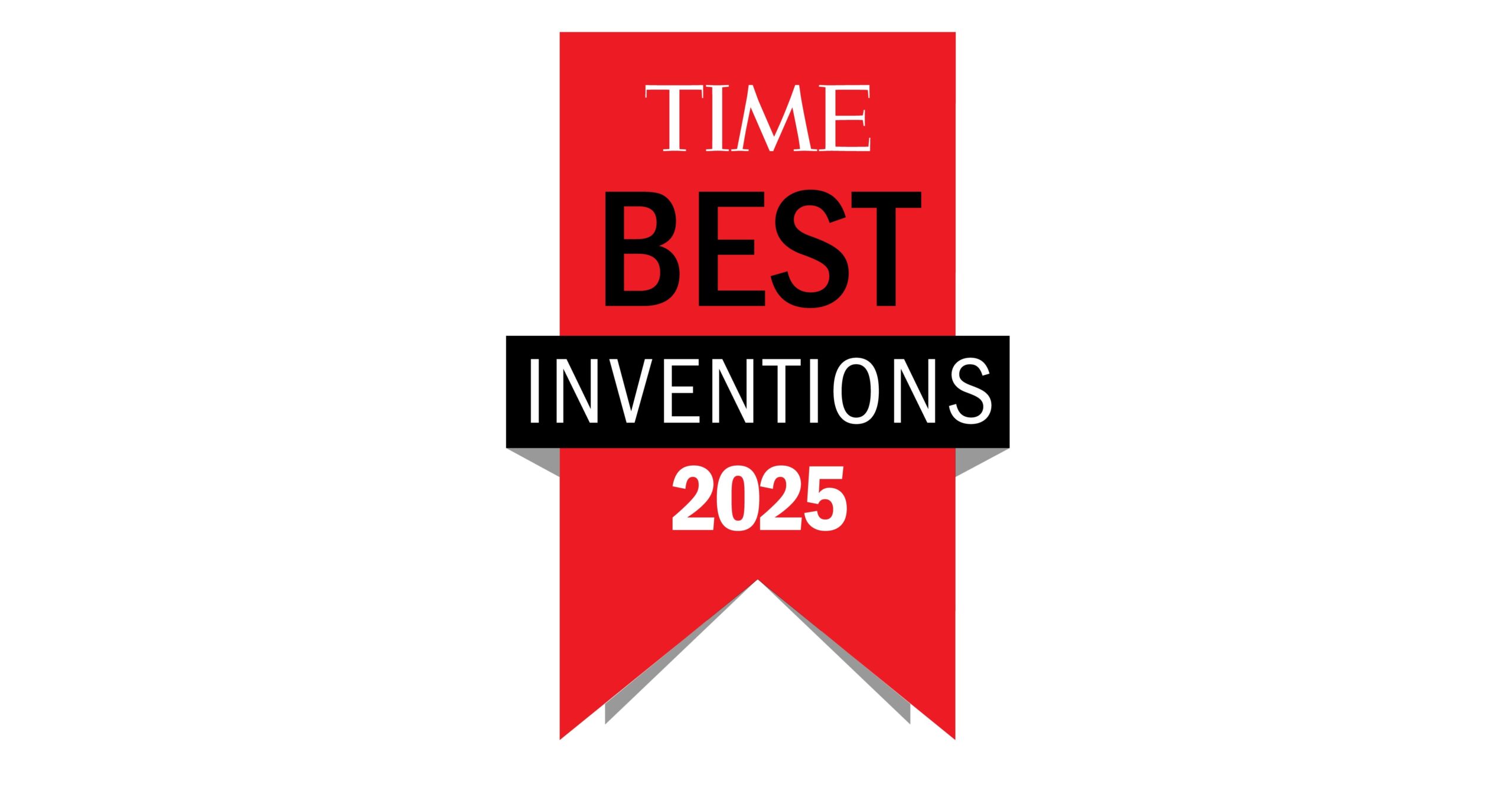In an effort to shake off tired category tropes, Australian indie ABEL’s ‘This Body Says’ brand platform for Just Eat Takeaway gives voice to warring body parts deciding what to order.
Staring at a food delivery app, paralysed by choice, has…

In an effort to shake off tired category tropes, Australian indie ABEL’s ‘This Body Says’ brand platform for Just Eat Takeaway gives voice to warring body parts deciding what to order.
Staring at a food delivery app, paralysed by choice, has…

A nearly complete fossil skeleton found on the U.K.’s Jurassic Coast represents a newly identified species of ancient marine reptile that lived alongside dinosaurs.
The ichthyosaur, dubbed Xiphodracon goldencapsis, was likely around 10 feet (3…

Female athletes have reaction times 80 milliseconds faster and make fewer mistakes on the day they ovulate, according to research.
Researchers at University College London (UCL) studied how different stages of the menstrual cycle and levels of…

The government has allocated Rs9 billion under the Pakistan Accelerated Vehicle Electrification (PAVE) scheme for the current fiscal year, aiming to subsidize the purchase of approximately 116,000 electric bikes and 3,000 electric rickshaws and loaders.
Responding to a query raised by Anusha Rehman during Question Hour in Senate, State Minister for Railways, Finance and Revenue Bilal Azhar Kayani stated that the initiative falls under the recently launched New Energy Vehicle (NEV) Policy 202530, which is aimed at accelerating the adoption of electric vehicles and enhancing local EV manufacturing capabilities.

Variety Awards Circuit section is the home for all awards news and related content throughout the year, featuring the following: the official predictions for the upcoming Oscars, Emmys, Grammys and Tony Awards…

When the Apollo astronauts returned from the Moon, they brought with them samples of lunar soil (regolith) and rock. The analysis of these samples forever changed our perceptions of how the Earth-Moon system formed and evolved….

Tigris Data Inc., the operator of an object storage service optimized for artificial intelligence workloads, has raised $25 million in early-stage funding.
The company said in its announcement of the Series A round today that Spark Capital…

Dual Recognition Underscores Therabody’s Leadership in Driving the Future of Wellness with Science-Backed, Clinically Proven Innovations
LOS ANGELES, Oct. 9, 2025 /PRNewswire/ — Therabody, the global leader in wellness…
As global trade has expanded – especially with the ascent of China – concerns about job losses and deindustrialisation in high-income countries have grown. While many studies document the level of impact of import competition on employment, we know less about how firms adapt. Do they downsize, switch product lines/industries, or reorganise production through offshoring to cushion the blow? In a recet paper (Ito and Matsuura 2025), we address these questions using a uniquely rich panel of Japanese firms spanning 1997–2014, focusing on three margins of adjustment: employment (especially production workers), industry switching, and offshoring (imports of intermediates from Asia). We also ask when these adjustments occur – either immediately or with a lag.
Figure 1 documents a clear rise in Chinese import penetration into Japan from the late 1990s onward, with only a crisis-era pause. Over the same period, Japan’s manufacturing share of employment fell from 20.8% in 1995 to 15.3% in 2015) (Figure 2), providing prima facie evidence of structural pressure.
Figure 1 Import penetration ratio from China
Figure 2 Share of manufacturing employment in Japan
How do firms respond to intensifying import competition from China? Table 1 presents the distribution of firms according to their response patterns. Firms are categorised into four groups based on their reactions. The first group consists of firms that neither reduce employment nor switch industries, labeled “NoAdjust”. The second group includes firms that adjust employment only (“EmplAdjustOnly”), while the third group comprises firms that switch industries only (“IndSwitchOnly”). The fourth group consists of firms that adopt both strategies – employment adjustment and industry switching – labeled “BothEmplSwitch”. Employment adjustment is defined as a reduction of 10% or more in the number of production workers over the previous five years. Industry switching refers to a change in a firm’s primary four-digit industry classification.
To assess the impact of Chinese import competition, we compare firms operating in the top and bottom five industries based on the extent of change in Chinese import penetration. Among all firms shown in column (1), 54% made no adjustments (NoAdjust), 30.5% implemented only employment reductions (EmplAdjustOnly), 9.2% switched industries without adjusting employment (IndSwitchOnly), and 6.3% pursued both strategies (BothEmplSwitch). Columns (2) and (3) present firms in the bottom five and top five industries, respectively, based on the degree of change in Chinese import penetration. In the bottom five industries, shown in column (2), 58% of firms did not implement any adjustments (NoAdjust). While the share of firms engaging in industry switching – either alone or in combination with employment reductions – was low, the proportion of firms implementing only employment adjustments was similar to that observed for all firms. By contrast, in the top five industries, presented in column (3), the share of firms that made no adjustments was lower, at 48%. The proportion of firms that engaged only in industry switching or that strategy in combination with employment reduction was notably higher at 11% and 9.7%, respectively. These patterns suggest that firms exposed to greater import competition from China are more likely to respond with a combination of employment adjustment and industry switching.
Table 1 Firm’s reaction patterns
Econometric analyses using the multinomial logit model demonstrated the following:
Author’s note: The main research on which this column is based (Ito and Matsuura 2025) first appeared as a Discussion Paper of the Research Institute of Economy, Trade and Industry (RIETI) of Japan.
Acemoglu, D, D Autor, D Dorn, G Hanson and B Price (2016), “Import Competition and the Great US Employment Sag of the 2000s”, Journal of Labor Economics 34(1): S142-S198.
Autor, D, D Dorn and G Hanson (2013), “The China Syndrome: Local Labor Market Effect of Import Competition in the United States”, American Economic Review 103(6): 2121-2168.
Hayakawa, K, T Ito and S Urata (2021), “Impacts of Increased Chinese Imports on Japan’s Labor Market”, Japan and the World Economy 59, 101087.
Ito, T and T Matsuura (2025), “Import Competition and Restructuring Strategies: Evidence from Japanese firm-level data”, RIETI Discussion Paper Series 25-E-059
Iacovone, L, F Rauch and L A Winters (2013), “Trade as an engine of creative destruction: Mexican experience with Chinese competition”, Journal of International Economics 89(2): 379–392.
Miranda, V, M-M Badia and I Van Beveren (2012), “Globalization drives strategic product switching,” Review of World Economics 148: 45-72.
The year 2024 was confirmed by the Copernicus Climate Change Service to be the warmest year on record globally, and the first calendar year that the average global temperature exceeded 1.5°C above its pre-industrial level. As climate change intensifies, the financial and regulatory risks facing businesses are under increasing scrutiny. Governments and financial institutions worldwide are aligning corporate reporting requirements with the recommendations of the Task Force on Climate-related Financial Disclosures.
The EU has taken a decisive step by implementing the Corporate Sustainability Reporting Directive (European Commission 2023), mandating around 50,000 companies, including 10,000 foreign companies, to report on climate-related risks from 2025. While disclosure requirements are becoming more stringent, recent studies suggest that corporate climate disclosure is becoming too costly and often a mere box-ticking exercise, with firms engaging in ‘greenwashing’ or selective reporting of non-material risks (Bingler et al. 2022). This raises a crucial question: how can investors, regulators, and consumers ensure they have a clear, standardised, and comparable understanding of climate risks across industries and geographies at a reasonable cost?
In November 2024, European Commission President Ursula von der Leyen announced the Omnibus Environmental, Social, and Governance (ESG) Regulation to consolidate and simplify corporate sustainability reporting obligations. Our background research and this column recommend a methodology that can support the simplification of reporting, while providing comparable and standardised data and maintaining reporting requirements for a large number of companies without extra burden.
In our recent research (Erhart et al. 2025), we propose a comprehensive method for assessing corporate climate risks by integrating data from major pollutant release and transfer registers and greenhouse-gas reporting programmes with satellite observations across 30 countries, including Australia, Canada, the EU, and the US. Our study analyses data from 70,000 industrial firms and their 170,000 facilities, offering an unprecedented large-scale approach to evaluating both transition and physical climate risks required by the Corporate Sustainability Reporting Directive and the related European Sustainability Reporting Standard (Figure 1).
Figure 1 Climate change transition and physical risks covered in our study
Our research highlights that climate risks manifest differently across industries and locations.
1. Transition risk. Measured through reported greenhouse gas emissions, transition risk is highest for industrial plants in the US. Companies with high emissions may continue to face regulatory and market pressures to decarbonise or risk losing investor confidence in the long run.
2. Physical risk. Assessed via historical data on cooling energy needs (heat risk), flood exposure, and photovoltaic power potential, physical risks are highly location-dependent. For instance, heat risk is more severe for firms in Australia, Southern Europe, and the southern US, while flood exposure is more pronounced in Central Europe and the eastern US (Figures 2 and 3).
Figure 2 Flood exposure (maximum historical water discharge at industrial company sites)
Figure 3 Heat risk of industrial company sites in the sample in cooling degree days
3. No strong correlation between transition and physical risks. Unlike common assumptions, our findings indicate that transition and physical risks are not necessarily correlated at the company level. Some firms may have low emissions but face high physical risks due to extreme weather exposure, while others with high emissions may operate in less climate-vulnerable locations.
Figure 4 No strong correlation between transition and physical risks
These findings have critical implications for policymakers, investors, and corporate managers.
Our study demonstrates that publicly available pollution registers and satellite observations of physical climate risks offer a valuable, yet underutilised, resource for regular climate-risk assessments. However, these datasets remain fragmented across jurisdictions, limiting their effectiveness for global risk evaluation. We recommend greater international coordination in environmental reporting and data integration to enhance transparency and comparability.
With upcoming regulatory changes, companies, investors, and regulators must adopt more rigorous and data-driven approaches to climate-risk assessment. By leveraging pollution registers and satellite imaging and radar observations, we can gain a clearer and more actionable picture of industrial climate risks, ultimately fostering a more resilient and sustainable global economy.
Bingler, J A, M Kraus, M Leippold and N Webersinke (2022), “Cheap talk and cherry-picking: What ClimateBert has to say on corporate climate risk disclosures”, Finance Research Letters 47(Part B).
Copernicus Climate Change Service (2025), Copernicus: 2024 is the first year to exceed 1.5°C above pre-industrial level, Global Climate Highlights 2024.
Erhart, S, S Szabó, and K Erhart (2025), “Integrating pollutant registers for the climate change risk evaluation of industrial companies in Australia, Europe and North America”, Nature Scientific Reports 15(1207).
European Commission (2023), “New rules on corporate sustainability reporting: The Corporate Sustainability Reporting Directive”.
EU (2023), “Regulation of the European Parliament and of the Council of 27 November 2019 on sustainability-related disclosures in the financial services sector”, PE/87/2019/REV/1.